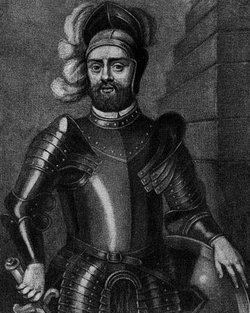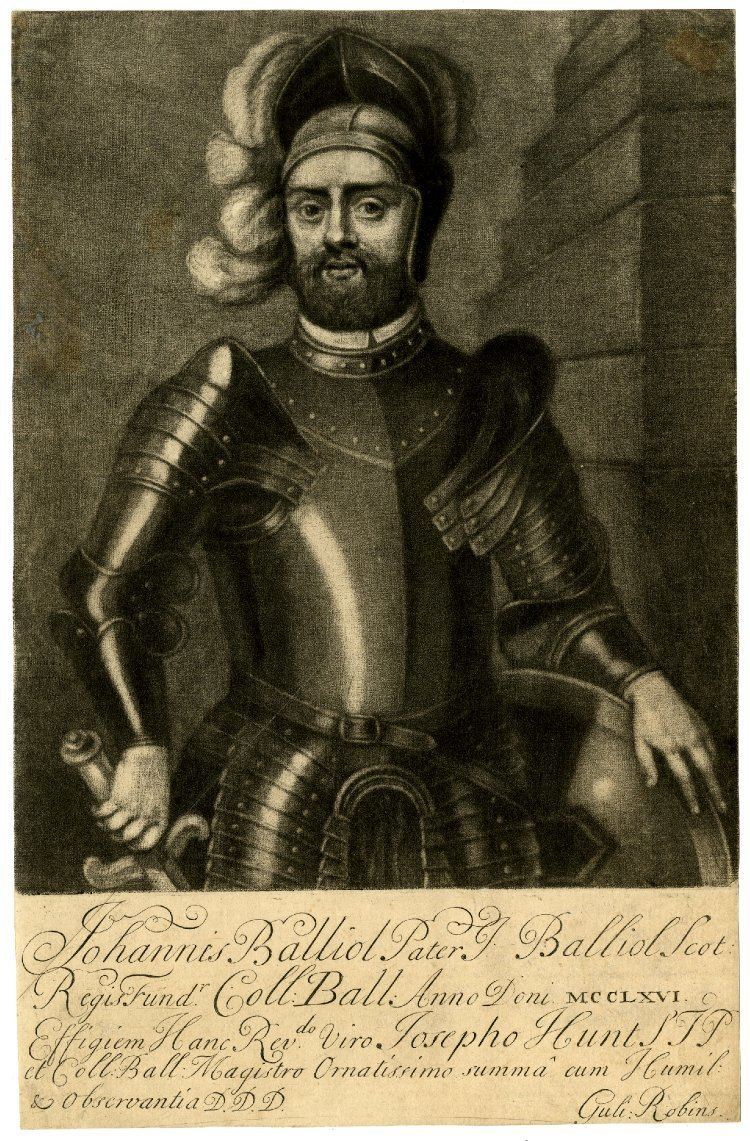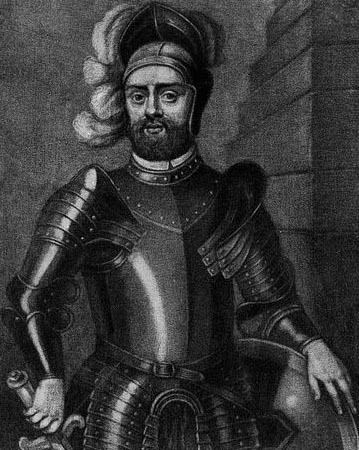Name John de Grandchildren Edward Balliol Children John Balliol | Parents Hugh de Balliol Died October 25, 1268 | |
 | ||
Similar People John Balliol, Edward Balliol, Drummond Bone | ||
John Balliol
John de Balliol (before 1208 – 25 October 1268) was a leading figure of Scottish and Anglo-Norman life. Balliol College, in Oxford, is named after him.
Contents

Life

John de Balliol was born before 1208 to Hugh de Balliol, Lord of Balliol and of Barnard Castle and Gainford (c. 1177–February 2, 1229) and Cecily de Fontaines, daughter of Aléaume de Fontaines, chevalier, seigneur of Fontaines and Longpré-les-Corps-Saints. It is believed that he was educated at Durham School in the city of Durham.
In 1223, Lord John married Dervorguilla of Galloway, the daughter of Alan, Lord of Galloway and Margaret of Huntingdon. By the mid-thirteenth century, he and his wife had become very wealthy, principally as a result of inheritances from Dervorguilla's family. This wealth allowed Balliol to play a prominent public role, and, on Henry III's instruction, he served as joint protector of the young king of Scots, Alexander III. He was one of Henry III's leading counsellors between 1258 and 1265. and was appointed Sheriff of Nottinghamshire and Derbyshire from 1261 to 1262. He was captured at the Battle of Lewes in 1264 but escaped and rejoined King Henry. In 1265 Thomas de Musgrave owed him a debt of 123 marks. About 1266 Baldwin Wake owed him a debt of 100 marks and more.
Following a dispute with the Bishop of Durham, he agreed to provide funds for scholars studying at Oxford. Support for a house of students began in around 1263; further endowments after his death, supervised by Dervorguilla, resulted in the establishment of Balliol College.
Issue
John and Dervorguilla had issue:
